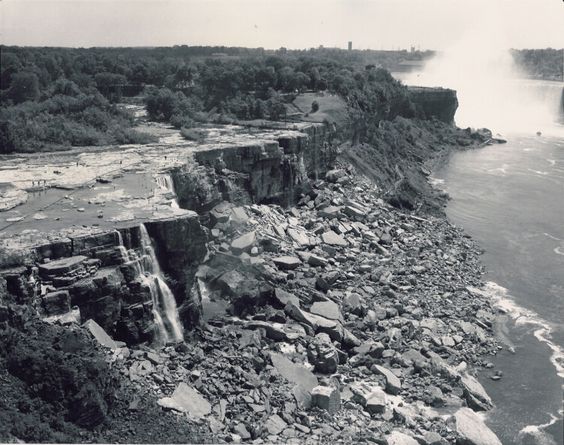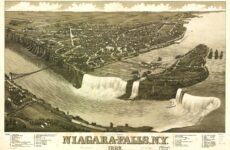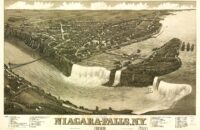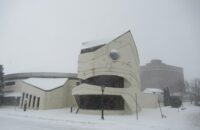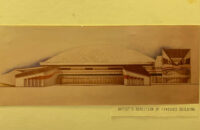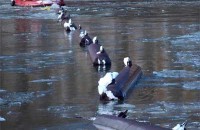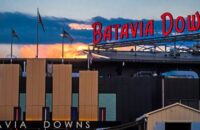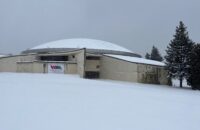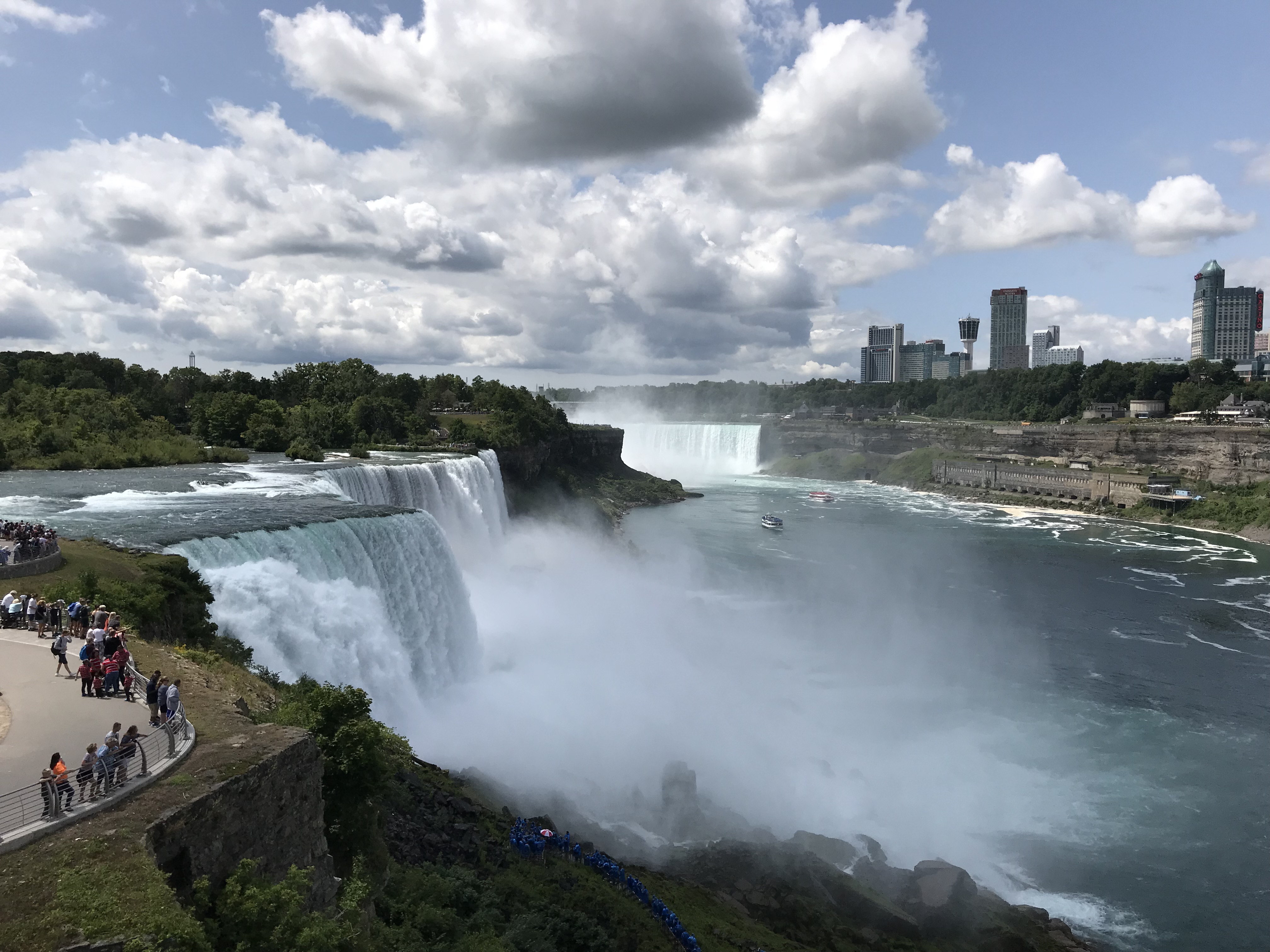The herd of local officials predicting a boom in tourism resulting from turning off the flow of water over the Niagara Falls is puzzling to anyone familiar with the last dewatering of the natural wonder.
The American Falls was reduced to a trickle in 1969 so that geologists could study the effects of erosion and buildup of rock at the base of the falls. While newspaper accounts of the time reported that overall attendance was up at Niagara Falls State Park, officials were quoted as saying that a majority of the visitors weren’t tourists but day-tripping local curiosity seekers.
Newspaper articles published then report the dewatering was disastrous for hoteliers and others involved in the hospitality industry here.
According to a contemporary article by Greg Mitchell in the Niagara Gazette, it wasn’t until August 25, 1969, that the number of tourists visiting the park became greater than the number of locals, who obviously don’t book hotel rooms or tours, buy souvenirs or take their meals in restaurants.
But Michelle Kratts, who served as Niagara Falls city historian until this past December, insisted that people came from all over the world to see the falls turned off in several interviews she gave.
“It’s the nature of curiosity. You want to see what’s underneath, to see its skeleton,” Kratts said. “The historian in me is excited to witness this.”
Kratts wasn’t yet born when Niagara’s American water was diverted the first time round, in June 1969, and has apparently not read any newspaper accounts of the event either.
She is not alone.
“Dewatering is expected initially (to) be a tourism draw (a once in a lifetime opportunity to see the falls and river channel without water), but after some period of time could negatively impact park attendance, particularly during the summer tourist season,” a preliminary report by the Albany engineering firm Greenman Pedersen states.
The dewatering plan and the project to replace two small bridges connecting Goat Island with the mainland may net Greenman Pedersen as much as $4.9 million in consulting fees.
Niagara Falls Mayor Paul Dyster likened the plans for another shutoff to the historic 2011 crossing of tightrope daredevil Nik Wallenda. Dyster told a local television station that the project won’t affect the Maid of the Mist operation, so everything will be fine.
“It’s not like we’re turning off the entire falls, water will still flow over the Horseshoe Falls so the Maid of the Mist will keep running,” Dyster said.
Assemblyman John Ceretto – who was 17 years old last time the falls’ were dewatered – told the Lockport Union Sun & Journal he expects a tourism boom, and John Percy, CEO of the Niagara Tourism & Convention Corporation, told CNN that the dewatering is “an exciting — even an enormous — marketing opportunity for us.”
Percy claimed that with the right planning, the waterless falls could create an uptick in tourism.
Viewing the dry falls “could be a once-in-a-lifetime opportunity for many people,” he said. “Plus it’s not like the whole Niagara Falls will be shut down; while the American Falls may be dewatered, Canada’s Horseshoe Falls will be at full gush.”
The novelty of the falls — the subject of Native American legends and an attraction for hundreds of years — being shut off was its own tourist attraction, Percy claimed, adding that he looked forward to working in coordination with state, park and city officials to devise the “right messaging” around the dewatering.
“This is an enormous opportunity,” Percy declared. “[The dewatering of the American Niagara Falls] will gain worldwide attention. You know, this is a once in a lifetime, possibly, opportunity. We don’t know if this will happen again, so we really do want to capitalize on it.”
He expressed a will to ensure visitors during the water-bare months are given as much access to stripped sites as possible. Maybe hotels could offer promotions involving a dry martini, he quipped, or perhaps the message should be that this may be the only chance for visitors to see what lies beneath the falls.
In 1969, it was found that “what lies beneath” is a pile of broken rocks, tangled tree trunks and at least two dead bodies, along with coins tossed in by tourists over the years. The coins were removed by the bucketful by park workers who were concerned that people might injure themselves crawling over the rocks to get them.
But Percy is optimistic.
“When this was done in 1969, we didn’t have the channels of the social media networks and the 24-hour news channels to get this message out to the world,” Percy said. “It’s, for many, a once-in-a-lifetime experience. This will only happen once … It could only happen one more time. I really do believe it has that appeal that people will want to see it. So come capture, experience it.”
Canadian tourism officials were quick to begin salivating at the prospect of the water on the American side being shut down, according to an article in the Toronto Globe and Mail.
“A plan that could see the American side of Niagara Falls go dry for a period of time to rebuild two bridges might be a boon to Canadian tourism,” the article stated.
In 1969, almost all of the trees on the dewatered riverbanks died of thirst within a month, it was reported. Local historian Paul Gromosiak, who has written many books and thousands of articles about the falls, and arguably knows more about them than any living person, called the plan a bad idea.
“I think it’s a mistake,” Gromosiak said, adding that he visited the falls almost every day during the 1969 dewatering.
“I just wanted to see the progress, and I wanted to see how tourists were reacting. Of course they were confused,” he said.
But State parks spokesman Randy Simons also called the prospect of a dry falls “a once-in-a-lifetime” event “because beyond fixing these bridges, there is no reason to dewater the falls.”
The sound of Niagara Falls’ unmistakable belligerent roar as 85,000 cubic feet (2.4m liters) of water crash down to its rocky base every second quite literally takes one’s breath away.
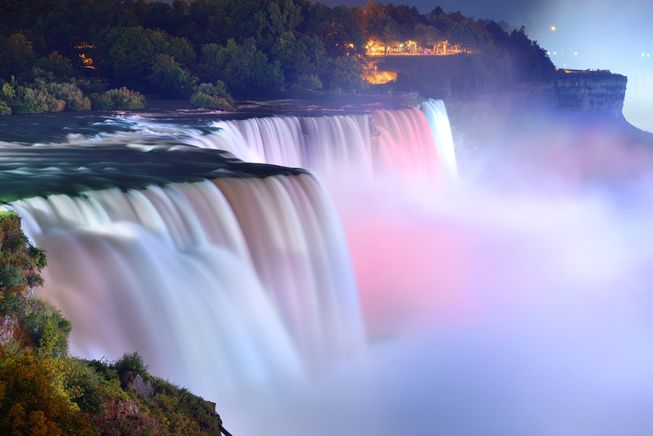
The image above captures perfectly the majesty and terror of the spectacular American Falls, while the photo below — taken from the same vantage point — shows the falls during the dewatering of 1969. If you were a tourist, traveling hundreds or even thousands of miles to spend money on hotels, restaurants, tours and souvenirs, which sight would you want to see? Hospitality industry representatives in 1969 said business was off by as much as 40 percent during the dewatering.

